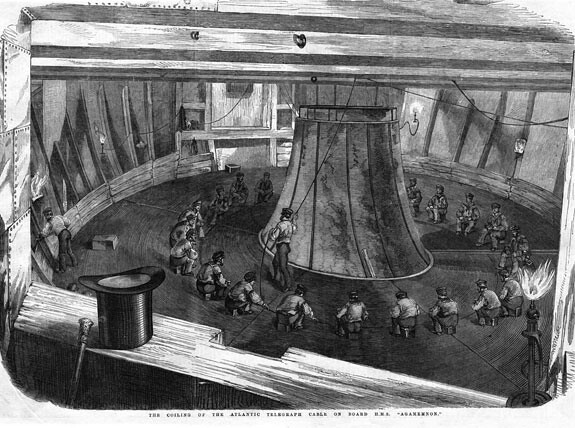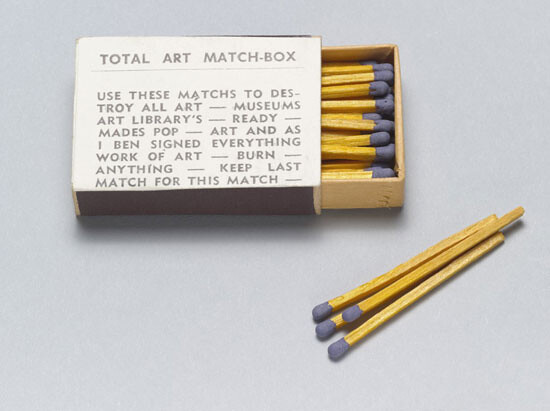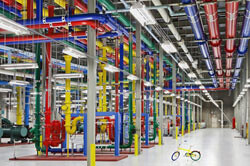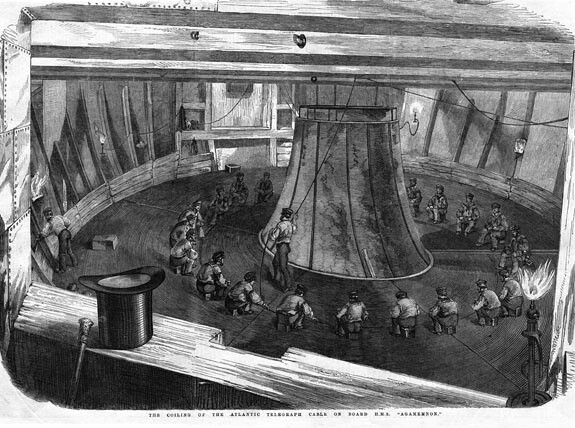The topic of this essay is artistic work. I am not, of course, an artist. But in spite of being quite specific in some respects, artistic work is not fully autonomous. It relies on the more general—social, economic, technical, and political—conditions of art production, distribution, and presentation. During recent decades these conditions have changed drastically, due first and foremost to the emergence of the internet.
In the period of modernity, the museum was the institution that defined the dominant regime under which art functioned. But in our day, the internet offers an alternative possibility for art production and distribution—a possibility that the permanently growing number of artists embrace. What are the reasons to like the internet, especially for artists, writers, and so forth?
Obviously, one likes the internet in the first place because it is not selective—or at least much less selective than a museum or a traditional publishing house. Indeed, the question that always troubled artists in relation to the museum concerned the criteria of choice—why do some artworks come into the museum while other artworks do not? We know the, so to speak, catholic theories of selection according to which artworks must deserve to be chosen by the museum: they should be good, beautiful, inspiring, original, creative, powerful, expressive, historically relevant—one can cite thousand of similar criteria. However, these theories collapsed historically because nobody could explain why one artwork was more beautiful or original than another. So other theories took their place, theories that were more protestant, even Calvinist. According to these theories, artworks are chosen because they are chosen. The concept of a divine power that is perfectly sovereign and does not need any legitimization was transferred to the museum. This protestant theory of choice, which stresses the unconditional power of the chooser, is a precondition for institutional critique—the museums were criticized for how they used and abused their alleged power.
Song by Les Horribles Cernettes written in 1993 when less than a hundred websites existed. Les Horribles Cernettes was an amateur band constituted by staff from the Cern Labs in Geneva, Switzerland. The band are also the subject of the first picture to ever be uploaded online.
This kind of institutional critique doesn’t make much sense in the case of the internet. There are, of course, examples of internet censorship practiced by some states, yet there is no aesthetic censorship. Anyone can put any texts or visual material of any kind on the internet and make it globally accessible. Of course, artists often complain that their artistic production drowns in the sea of data that circulates through the internet. The internet presents itself as a huge garbage can in which everything disappears, never getting the degree of public attention that one hopes to achieve. But nostalgia for the old days of aesthetic censorship by the museum and gallery system, which watched over art’s quality, innovation, and creativity, leads nowhere. Ultimately, everyone searches the internet for information about one’s own friends—what they are doing right now. One follows certain blogs, e-magazines, and websites, and ignores everything else. The art world is only a small part of this digital public space—and the art world itself is very much fragmented. So even if there are many complaints about the unobservability of the internet, no one is really interested in total observation: everyone is looking for specific information—and is ready to ignore anything else.
Still, the impression that the internet as a whole is unobservable defines our relationship to it—we tend to think about it as an infinite flow of data that transcends the limits of our individual control. But, in fact, the internet is not a place of data flow—it is a machine to stop and reverse data flow. The unobservability of the internet is a myth. The medium of the internet is electricity. And the supply of electricity is finite. So the internet cannot support infinite data flows. The internet is based on a finite number of cables, terminals, computers, mobile phones, and other equipment. The efficiency of the internet is based precisely on its finiteness and, therefore, on its observability. Search engines such as Google demonstrate this. Nowadays, one hears a lot about the growing degree of surveillance, especially through the internet. But surveillance is not something external to the internet, or some specific technical use of the internet. The internet is by its essence a machine of surveillance. It divides the flow of data into small, traceable, and reversible operations, thus exposing every user to surveillance—real or possible. The internet creates a field of total visibility, accessibility, and transparency.


Of course, individuals and organizations try to escape this total visibility by creating sophisticated passwords and data protection systems. Today, subjectivity has become a technical construction: the contemporary subject is defined as an owner of a set of passwords that he or she knows—and that other people do not know. The contemporary subject is primarily a keeper of a secret. In a certain sense, this is a very traditional definition of the subject: the subject was long defined as knowing something about itself that only God knew, something that other people could not know because they were ontologically prevented from “reading one’s thoughts.” Today, however, being a subject has less to do with ontological protection, and more to do with technically protected secrets. The internet is the place where the subject is originally constituted as a transparent, observable subject—and only afterwards begins to be technically protected in order to conceal the originally revealed secret. However, every technical protection can be broken. Today, the hermeneutiker has become a hacker. The contemporary internet is a place of cyber wars in which the prize is the secret. And to know the secret is to control the subject constituted by this secret—and the cyber wars are the wars of this subjectivation and desubjectivation. But these wars can take place only because the internet is originally the place of transparency.
What does this original transparency mean for artists? It seems to me that the real problem with the internet is not the internet as the place for the distribution and exhibition of art, but the internet as the place for working. Under the museum regime, art was produced in one place (the atelier of the artist) and shown in another place (the museum). The emergence of the internet erased this difference between the production and the exhibition of art. The process of art production insofar as it involves the use of the internet is always already exposed—from its beginning to its end. Earlier, only industrial workers operated under the gaze of others—under the kind of permanent control so eloquently described by Michel Foucault. Writers or artists worked in seclusion, beyond panoptic, public control. However, if the so-called creative worker uses the internet, he or she is subjected to the same or even greater degree of surveillance as the Foucauldian worker. The only difference is that this surveillance is more hermeneutic than disciplinary.


The results of surveillance are sold by the corporations that control the internet because they own the means of production, the material-technical basis of the internet. One should not forget that the internet is owned privately. And the profit comes mostly from targeted advertisements. Here we confront an interesting phenomenon: the monetization of hermeneutics. The classical hermeneutics that searched for the author behind the work was criticized by the theoreticians of structuralism and “close reading,” who thought that it made no sense to chase ontological secrets that are, by definition, inaccessible. Today, this old, traditional hermeneutics is reborn as a means of economic exploitation on the internet, where all secrets are revealed. The subject here is no longer concealed behind his or her work. The surplus value that such a subject produces and that is appropriated by internet corporations is this hermeneutic value: the subject not only does something on the internet, but also reveals itself as a human being with certain interests, desires, and needs. The monetization of classical hermeneutics is one of the most interesting processes to emerge in recent decades.
At first glance, it seems that for artists, this permanent exposure has more positive aspects than negative. The re-synchronization of art production and art exposure through the internet seems to make things better, not worse. Indeed, this re-synchronization means that an artist no longer needs to produce any final product, any artwork. The documentation of the art-making process is already an artwork. Art production, presentation, and distribution coincide. The artist becomes a blogger. Almost everyone in the contemporary art world acts as a blogger—individual artists, but also art institutions, including museums. Ai Weiwei is paradigmatic in this respect. Balzac’s artist who could never present his masterpiece would have no problem under these new conditions: documentation of his efforts to create a masterpiece would be his masterpiece. Thus, the internet functions more like the Church than the museum. After Nietzsche famously announced, “God is dead,” he continued: we have lost the spectator. The emergence of the internet means the return of the universal spectator. So it seems that we are back in paradise and, like saints, do the immaterial work of pure existence under the divine gaze. In fact, the life of a saint can be described as a blog that is read by God and remains uninterrupted even upon the saint’s death. So why do we need secrets anymore? Why do we reject this radical transparency? The answer to these questions depends on the answer to a more fundamental question concerning the internet: Does the internet effectuate the return of God, or of the malin génie, with its evil eye?
I would suggest that the internet is not paradise but, rather, hell—or, if you want, paradise and hell at the same time. Jean-Paul Sartre said that hell is other people—life under the gaze of others. (And Jacques Lacan said later that the eye of the other is always an evil eye.) Sartre argued that the gaze of others “objectifies” us—and in this way negates the possibility of change that defines our subjectivity. Sartre defined human subjectivity as a “project” directed towards the future—and this project has an ontologically guaranteed secret because it can never be revealed here and now, but only in the future. In other words, Sartre understood human subjects as struggling against the identity that was given to them by society. That explains why he interpreted the gaze of others as hell: in the gaze of others, we see that we have lost the battle and remain a prisoner of our socially codified identity.


Thus, we try to avoid the gaze of others for a while so that we can reveal our “true self” after a certain period of seclusion—to reappear in public in a new shape, in a new form. This state of temporary absence is constitutive of what we call the creative process—in fact, it is precisely what we call the creative process. André Breton tells a story about a French poet who, when he went to sleep, put on his door a sign that read: “Please be quiet—the poet is working.” This anecdote summarizes the traditional understanding of creative work: creative work is creative because it takes place beyond public control—and even beyond the conscious control of the author. This time of absence could last for days, months, years—or even a whole lifetime. Only at the end of this period of absence is the author expected to present a work (maybe found in his papers posthumously) that would be then accepted as creative precisely because it seemed to emerge out of nothingness. In other words, creative work is the work that presupposes the desynchronization of the time of work from the time of the exposure of its results. Creative work is practiced in a parallel time of seclusion, in secrecy—so that there is an effect of surprise when this parallel time gets re-synchronized with the time of the audience. That is why the subject of art practice traditionally wanted to be concealed, to become invisible, to take time out. The reason was not that artists had committed some crime or concealed some dirty secret they wanted to keep from the gaze of the others. We experience the gaze of others as an evil eye not when it wants to penetrate our secrets and make them transparent (such a penetrating gaze is rather flattering and exciting)—but when it denies that we have any secrets, when it reduces us to what it sees and registers.
Artistic practice is often understood as being individual and personal. But what does the individual or personal mean? The individual is often understood as being different from others. (For example: In a totalitarian society, all are alike. In a democratic, pluralistic society, all are different, and respected as being different.) However, here the point is not so much one’s difference from others but one’s difference from oneself—the refusal to be identified according to the general criteria of identification. Indeed, the parameters that define our socially codified, nominal identity are completely foreign to us. We did not choose our names, we were not consciously present at the date and place of our birth, we did not choose the name of the city or street where we live, we did not choose our parents, our nationality, and so forth. All these external parameters of our existence have no meaning for us—they do not correlate to any subjective evidence. They indicate how others see us but they are completely irrelevant to our inner, subjective lives.


Modern artists revolted against the identities imposed on them by others—by society, state, school, parents. They wanted the right of sovereign self-identification. Modern art was the search for the “true self.” Here the question is not whether the true self is real or merely a metaphysical fiction. The question of identity is not a question of truth but a question of power: Who has the power over my own identity—I myself or society? And more generally: Who has control over the social taxonomy, the social mechanisms of identification—I myself or state institutions? This means that the struggle against my own public persona and nominal identity in the name of my sovereign persona, my sovereign identity, also has a public, political dimension, since it is directed against the dominating mechanisms of identification—the dominating social taxonomy, with all its divisions and hierarchies. That is why modern artists always said: Do not look at me. Look at what I am doing. That is my true self—or maybe no self at all, maybe the absence of the self. Later, artists mostly gave up the search for the hidden, true self. Rather, they began to use their nominal identities as readymades—and to organize a complicated play with them. But this strategy still presupposes disidentification from nominal, socially codified identities—in order to artistically reappropriate, transform, and manipulate them.
Modernity was the time of desire for utopia. The utopian expectation means nothing less than that one’s project of discovering or constructing the true self becomes successful—and socially recognized. In other words, the individual project of seeking the true self acquires a political dimension. The artistic project becomes a revolutionary project that aims at the total transformation of society and the obliteration of existing taxonomies. Here the true self becomes resocialized—by creating the true society.
The museum system is ambivalent towards this utopian desire. On the one hand, the museum offers the artist a chance to transcend his or her own time, with all its taxonomies and nominal identities. The museum promises to carry the artist’s work into the future—it is a utopian promise. However, the museum betrays this promise at the same moment that it fulfills it. The artist’s work is carried into the future—but the nominal identity of the artist becomes reimposed on his or her work. In the museum catalogue, we read the same name, date and place of birth, nationality, and so forth. That is why modern art wanted to destroy the museum. However, the internet betrays the search for the true self in an even more radical way: the internet inscribes this search from its beginning—and not only at its end—back into nominal, socially codified identity. In turn, revolutionary projects become historicized. We can see it today, as former Communist mankind becomes re-nationalized and reinscribed in Russian, Chinese, and other national histories.
In the so-called postmodern period, the search for the true self and, accordingly, the true society in which this true self could be revealed, was proclaimed to be obsolete. We therefore tend to speak about postmodernity as a post-utopian time. But this is not quite true. Postmodernity did not give up the struggle against the subject’s nominal identity—in fact, it even radicalized this struggle. Postmodernity had its own utopia—a utopia of the subject’s self-dissolution in infinite, anonymous flows of energy, desire, or the play of signifiers. Instead of abolishing the nominal, social self by discovering the true self through art production, postmodern art theory invested its hopes for complete loss of identity through the process of reproduction: a different strategy pursuing the same goal.
The postmodern utopian euphoria that the notion of reproduction provoked at the time can be illustrated by the following passage from the book On the Museum’s Ruins by Douglas Crimp. In this well-known book, Crimp claimed, with reference to Walter Benjamin, that
through reproductive technology, postmodernist art dispenses with the aura. The fiction of the creating subject gives way to the frank confiscation, quotation, excerptation, accumulation, and repetition of already existing images. Notions of originality, authenticity, and presence, essential to the ordered discourse of the museum, are undermined.1
The flow of reproductions overflows the museum—and individual identity drowns in this flow. The internet became for some time the place where these postmodern utopian dreams were projected—dreams about the dissolution of all identities in the infinite play of signifiers. The globalized rhizome took the place of Communist mankind.
However, the internet has become not a place for the realization of postmodern utopias, but their graveyard—as the museum became a graveyard for modern utopias. Indeed, the most important aspect of the internet is that it fundamentally changes the relationship between original and copy, as described by Benjamin—and thus makes the anonymous process of reproduction calculable and personalized. On the internet, every free-floating signifier has an address. The deterritorializing data flows become reterritorialized.


Walter Benjamin famously distinguished between the original, which is defined through its “here and now,” and the copy, which is siteless, topologically indeterminable, lacking a “here and now.” Contemporary digital reproduction is by no means siteless, its circulation is not topologically undetermined, and it does not present itself in the form of a multiplicity as Benjamin described it. Every data file’s address on the internet accords it a place. The same data file with a different address is a different data file. Here the aura of originality is not lost, but instead substituted by a different aura. On the internet, the circulation of digital data produces not copies, but new originals. And this circulation is perfectly traceable. Individual pieces of data are never deterritorialized. Moreover, every internet image or text has not only its specific unique place, but also its unique time of appearance. The internet registers every moment when a certain piece of data is clicked, liked, un-liked, transferred, or transformed. Accordingly, a digital image cannot be merely copied (as an analogue, mechanically reproducible image can) but always only newly staged or performed. And every performance of a data file is dated and archived.
During the epoch of mechanical reproduction, we heard a lot about the demise of subjectivity. We heard from Heidegger that die Sprache spricht (“the language speaks”), and not so much that an individual uses the language. We heard from Marshall McLuhan that the medium is the message. Later, Derridian deconstruction and Deleuzian machines of desire taught us to get rid of our last illusions concerning the possibility of identifying and stabilizing subjectivity. However, now our “digital souls” have became traceable and visible again. Our experience of contemporaneity is defined not so much by the presence of things to us as spectators, but rather by our presence to the gaze of the hidden and unknown spectator. However, we do not know this spectator. We have no access to its image—if this spectator has an image at all. In other words, the hidden universal spectator of the internet can be thought only as a subject of universal conspiracy. The reaction to this universal conspiracy necessarily takes the form of a counter-conspiracy: one will protect one’s soul from the evil eye. Contemporary subjectivity can no longer rely on its dissolution in the flow of signifiers because this flow has become controllable and traceable. Thus, a new utopian dream emerges—a truly contemporary dream. It is the dream of an unbreakable code word that can forever protect our subjectivity. We want to define ourselves as a secret that would be even more secretive than the ontological secret—the secret that even God cannot discover. The paradigmatic example of such a dream can be found in WikiLeaks.
The goal of WikiLeaks is often seen as the free flow of data, as the establishment of free access to state secrets. But at the same time, the practice of WikiLeaks demonstrates that universal access can be provided only in the form of universal conspiracy. In an interview, Julian Assange says:
So if you and I agree on a particular encryption code, and it is mathematically strong, then the forces of every superpower brought to bear on that code still cannot crack it. So a state can desire to do something to an individual, yet it is simply not possible for the state to do it—and in this sense, mathematics and individuals are stronger than superpowers.2
Transparency is based here on radical non-transparency. The universal openness is based on the most perfect closure. The subject becomes concealed, invisible, takes time out to become operative. The invisibility of contemporary subjectivity is guaranteed insofar as its encryption code cannot be hacked—insofar as the subject remains anonymous, non-identifiable. It is password-protected invisibility alone that guarantees the subject’s control over its digital operations and manifestations.
Here I am of course discussing the internet as we know it now. But I expect that the coming cyber wars will change the internet radically. These cyber wars have already been announced—and they will destroy or at least seriously damage the internet as a dominant marketplace and means of communication. The contemporary world looks very much like the nineteenth-century world. That world was defined by the politics of open markets, growing capitalism, celebrity culture, the return of religion, terrorism, and counter-terrorism. World War I destroyed this world and made the politics of open markets impossible. In the end, the geopolitical and military interests of individual nation states showed themselves to be much more powerful than economic interests. A long period of wars and revolutions followed. Let us see what is waiting for us in the near future.
I would like to close with a more general consideration of the relationship between utopia and the archive. As I have tried to show, the utopian impulse is always related to the desire of the subject to break out of its own historically defined identity, to leave its place in the historical taxonomy. In a certain sense, the archive gives to the subject the hope of surviving one’s own contemporaneity and revealing one’s true self in the future because the archive promises to sustain and make accessible this subject’s texts or artworks after his or her death. This utopian or, at least, heterotopian promise is crucial to the subject’s ability to develop a distance from and critical attitude towards its own time and its own immediate audience.
Archives are often interpreted as a means to conserve the past—to present the past in the present. But at the same time, archives are machines for transporting the present into the future. Artists always do their work not only for their own time but also for art archives—for the future in which the artist’s work remains present. This produces a difference between politics and art. Artists and politicians share the common “here and now” of public space, and they both want to shape the future. That is what unites art and politics. But politics and art shape the future in different ways. Politics understands the future as a result of actions that take place here and now. Political action has to be efficacious, to produce results, to transform social life. In other words, political practice shapes the future—but it disappears in and through this future, it becomes totally absorbed by its own results and consequences. The goal of politics is to become obsolete—and to give way to the politics of the future.


But artists do not work only within the public space of their time. They also work within the heterogeneous space of art archives, where their works are placed among the works of past and future. Art, as it functioned in modernity and still functions in our time, does not disappear after its work is done. Rather, the artwork remains present in the future. And it is precisely this anticipated future presence of art that guarantees its influence on the future, its chance to shape the future. Politics shapes the future by its own disappearance. Art shapes the future by its own prolonged presence. This creates a gap between art and politics—a gap that was demonstrated often throughout the tragic history of the relationship between left art and left politics in the twentieth century.
Our archives are of course structured historically. And our use of these archives is still defined by the nineteenth century’s tradition of historicism. We thus tend to re-inscribe artists posthumously into the historical contexts from which they actually wanted to escape. In this sense, the art collections that preceded the historicism of the nineteenth century—the collections that wanted to be collections of instances of pure beauty, for example— seem only at first glance to be naive. In fact, they are more faithful to the original utopian impulse than their more sophisticated historicist counterparts. It seems to me that today we are beginning to be more and more interested in the non-historicist approach to our past. We are becoming more interested in the decontextualization and reenactment of individual phenomena from the past than in their historical recontextualization, more interested in the utopian aspirations that lead artists out of their historical contexts than in these contexts themselves. And it seems to me that this is a good development because it strengthens the utopian potential of the archive and weakens its potential for betraying the utopian promise—the potential that is inherent in any archive, regardless of how it is structured.
Douglas Crimp, On the Museum’s Ruins (Cambridge, MA: MIT Press, 1993), 58.
Hans Ulrich Obrist, “In Conversation with Julian Assange, Part I,” e-flux journal 25 (May 2011). See →.
